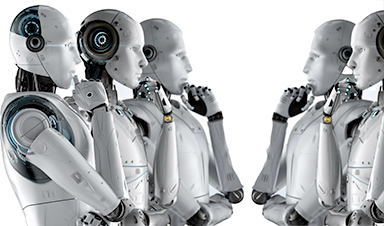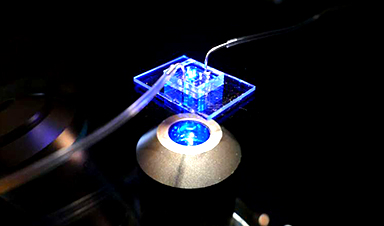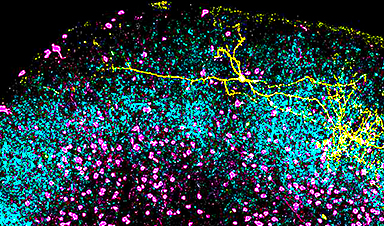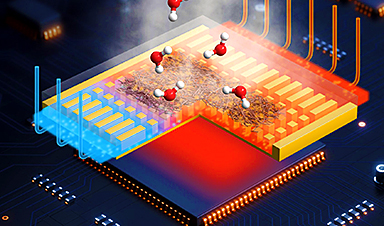From tailored Netflix recommendations to personalized Facebook feeds, artificial intelligence (AI) adeptly serves content that matches our preferences and past behaviors. But while a restaurant tip or two is handy, how comfortable would you be if AI-algorithms were in charge of your medical expert or new hire?
Now, a new study from the University of South Australia shows that most people are more likely to trust AI in situations where the stakes are low, such as music suggestions, but less likely to trust AI in high-stakes situations, such as medical decisions.
However, those with poor statistical literacy or little familiarity with AI were just as likely to trust algorithms for trivial choices as they were for critical decisions.
The study is published in the journal Frontiers in Artificial Intelligence.
Assessing responses from nearly 2,000 participants across 20 countries, researchers found that statistical literacy affects trust differently. People who understand that AI-algorithms work through pattern-based predictions (but also have risks and biases) were more skeptical of AI in high-stakes situations, but less so in low-stakes situations.
They also found that older people and men were generally more cautious of algorithms, as were people in highly industrialized nations like Japan, the US, and the UK.
Understanding how and when people trust AI-algorithms is essential, particularly as society continues to introduce and adopt machine-learning technologies. AI adoption rates have increased dramatically, with 72% of organizations now using AI in their business.
Lead author and human and artificial cognition expert Dr. Fernando Marmolejo-Ramos says the speed at which smart technologies are being used to outsource decisions is outpacing our understanding to successfully integrate them into society.
“Algorithms are becoming increasingly influential in our lives, impacting everything from minor choices about music or food, to major decisions about finances, health care, and even justice,” Dr. Marmolejo-Ramos says.
“But the use of algorithms to help make decisions implies that there should be some confidence in their reliability. That’s why it’s so important to understand what influences people’s trust in algorithmic decision-making. Our research found that in low-stakes scenarios, such as restaurant recommendations or music selection, people with higher levels of statistical literacy were more likely to trust algorithms.
“Yet, when the stakes were high, for things like health or employment, the opposite was true; those with better statistical understanding were less likely to place their faith in algorithms.”
UniSA’s Dr. Florence Gabriel says there should be a concentrated effort to promote statistical and AI literacy among the general population so that people can better judge when to trust algorithmic decisions.
“An AI-generated algorithm is only as good as the data and coding that it’s based on,” Dr. Gabriel says. “We only need to look at the recent banning of DeepSeek to grasp how algorithms can produce biased or risky data depending on the content that it was built upon.
“On the flip side, when an algorithm has been developed through a trusted and transparent source, such as the custom-build EdChat chatbot for South Australian schools, it’s more easily trusted. Learning these distinctions is important. People need to know more about how algorithms work, and we need to find ways to deliver this in clear, simple ways that are relevant to the user’s needs and concerns.
“People care about what the algorithm does and how it affects them. We need clear, jargon-free explanations that align with the user’s concerns and context. That way we can help people to responsibly engage with AI.”
More information: Fernando Marmolejo-Ramos et al, Factors influencing trust in algorithmic decision-making: an indirect scenario-based experiment, Frontiers in Artificial Intelligence (2025). DOI: 10.3389/frai.2024.1465605
News
Lipid nanoparticles discovered that can deliver mRNA directly into heart muscle cells
Cardiovascular disease continues to be the leading cause of death worldwide. But advances in heart-failure therapeutics have stalled, largely due to the difficulty of delivering treatments at the cellular level. Now, a UC Berkeley-led [...]
The basic mechanisms of visual attention emerged over 500 million years ago, study suggests
The brain does not need its sophisticated cortex to interpret the visual world. A new study published in PLOS Biology demonstrates that a much older structure, the superior colliculus, contains the necessary circuitry to perform the [...]
AI Is Overheating. This New Technology Could Be the Fix
Engineers have developed a passive evaporative cooling membrane that dramatically improves heat removal for electronics and data centers Engineers at the University of California San Diego have created an innovative cooling system designed to greatly enhance [...]
New nanomedicine wipes out leukemia in animal study
In a promising advance for cancer treatment, Northwestern University scientists have re-engineered the molecular structure of a common chemotherapy drug, making it dramatically more soluble and effective and less toxic. In the new study, [...]
Mystery Solved: Scientists Find Cause for Unexplained, Deadly Diseases
A study reveals that a protein called RPA is essential for maintaining chromosome stability by stimulating telomerase. New findings from the University of Wisconsin-Madison suggest that problems with a key protein that helps preserve chromosome stability [...]
Nanotech Blocks Infection and Speed Up Chronic Wound Recovery
A new nanotech-based formulation using quercetin and omega-3 fatty acids shows promise in halting bacterial biofilms and boosting skin cell repair. Scientists have developed a nanotechnology-based treatment to fight bacterial biofilms in wound infections. The [...]
Researchers propose five key questions for effective adoption of AI in clinical practice
While Artificial Intelligence (AI) can be a powerful tool that physicians can use to help diagnose their patients and has great potential to improve accuracy, efficiency and patient safety, it has its drawbacks. It [...]
Advancements and clinical translation of intelligent nanodrugs for breast cancer treatment
A comprehensive review in "Biofunct. Mater." meticulously details the most recent advancements and clinical translation of intelligent nanodrugs for breast cancer treatment. This paper presents an exhaustive overview of subtype-specific nanostrategies, the clinical benefits [...]
It’s Not “All in Your Head”: Scientists Develop Revolutionary Blood Test for Chronic Fatigue Syndrome
A 96% accurate blood test for ME/CFS could transform diagnosis and pave the way for future long COVID detection. Researchers from the University of East Anglia and Oxford Biodynamics have created a highly accurate [...]
How Far Can the Body Go? Scientists Find the Ultimate Limit of Human Endurance
Even the most elite endurance athletes can’t outrun biology. A new study finds that humans hit a metabolic ceiling at about 2.5 times their resting energy burn. When ultra-runners take on races that last [...]
World’s Rivers “Overdosing” on Human Antibiotics, Study Finds
Researchers estimate that approximately 8,500 tons of antibiotics enter river systems each year after passing through the human body and wastewater treatment processes. Rivers spanning millions of kilometers across the globe are contaminated with [...]
Yale Scientists Solve a Century-Old Brain Wave Mystery
Yale scientists traced gamma brain waves to thalamus-cortex interactions. The discovery could reveal how brain rhythms shape perception and disease. For more than a century, scientists have observed rhythmic waves of synchronized neuronal activity [...]
Can introducing peanuts early prevent allergies? Real-world data confirms it helps
New evidence from a large U.S. primary care network shows that early peanut introduction, endorsed in 2015 and 2017 guidelines, was followed by a marked decline in clinician-diagnosed peanut and overall food allergies among [...]
Nanoparticle blueprints reveal path to smarter medicines
Lipid nanoparticles (LNPs) are the delivery vehicles of modern medicine, carrying cancer drugs, gene therapies and vaccines into cells. Until recently, many scientists assumed that all LNPs followed more or less the same blueprint, [...]
How nanomedicine and AI are teaming up to tackle neurodegenerative diseases
When I first realized the scale of the challenge posed by neurodegenerative diseases, such as Alzheimer's, Parkinson's disease and amyotrophic lateral sclerosis (ALS), I felt simultaneously humbled and motivated. These disorders are not caused [...]
Self-Organizing Light Could Transform Computing and Communications
USC engineers have demonstrated a new kind of optical device that lets light organize its own route using the principles of thermodynamics. Instead of relying on switches or digital control, the light finds its own [...]





















